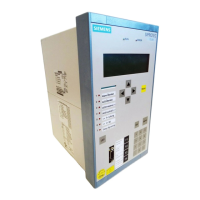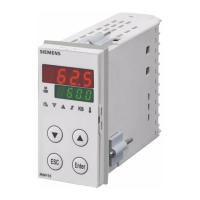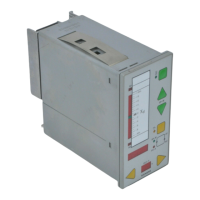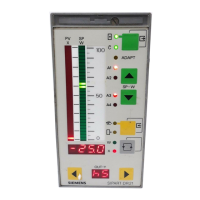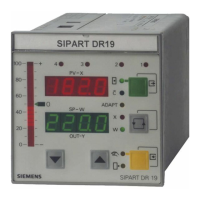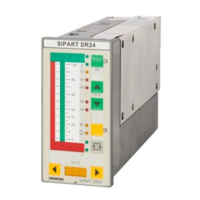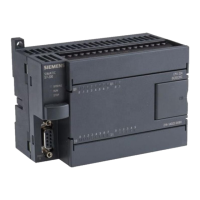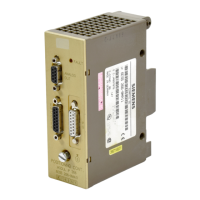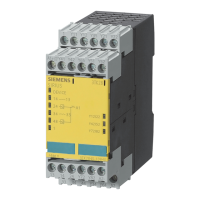Function Control
Function control is used for:
•
Functions, which do not contain function blocks
•
Function blocks within functions
NOTE
Simplifying Functions and Function control will be discussed in the following. The description also applies
to tripping stage control and function block control.
Functions can be switched to different operating modes. You use the parameter Mode to define whether you
want a function to run (On) or not Off). In addition, you can temporarily block a function or switch it into test
mode (parameter Mode = test) for the purpose of commissioning. In test mode the fault records are marked
with a test flag.
The function shows the current status – such as an
Alarm
– via the
status
signal.
The following explains the different operating modes and mechanisms and how you set the functions into
these modes. The function control is shown in the following figure. It is standardized for all fault recorder
functions. Therefore, this control is not discussed further in the individual function descriptions.
[losteuer-161012-01.tif, 1, en_US]
Figure 2-1 General Control of a Recorder Function
State Control
You can control the state of a function via the parameter Mode and the input superordinate state.
You set the specified operating state of the function via the parameter Mode. The function mode can be set to
On, Off , and Test. The operating state is described in Table 2-5. You can set the parameter Mode via:
•
DIGSI 5
•
On-site operation at the device
•
Certain systems control protocols (IEC 61850, IEC 60870-5-103)
The possibility to adjust the superordinate state is limited. For test purposes, the complete device can set into
test mode.
The following table shows the possible function states:
2.3
Basic Structure of the Function
2.3 Function Control
SIPROTEC 5, Fault Recorder, Manual 37
C53000-G5040-C018-5, Edition 11.2017
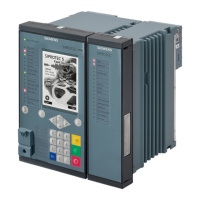
